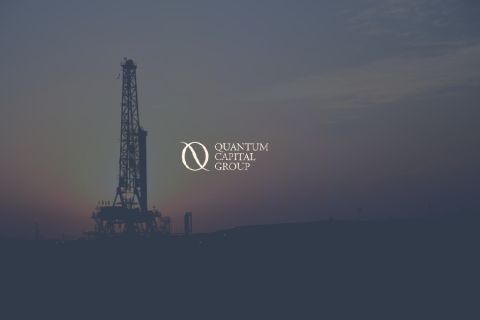
Saudi Arabia is speeding up its efforts and diversifying tactics to make the much-expected IPO of Saudi Aramco appealing for investors.
Saudi Arabia is speeding up its efforts and diversifying tactics to make the much-expected IPO of Saudi Aramco appealing for investors, as it plans to list up to 5% of the firm locally and on one or more international markets in the second quarter of 2018.
The proceeds from the IPO will be used to invest in other sectors in order to diversify the kingdom’s sources of income away from oil. But listing a stake of Saudi Aramco poses technical, legal and political challenges that the government needs to address to achieve its objectives to diversify the economy.
For the Saudi government, the expectations are high. Deputy Crown Prince Mohammed bin Salman said when he first unveiled the floating, that the 5% stake could raise $100 billion, based on Saudi Aramco being valued at $2 trillion.
But such estimates are meaningless without clarity on two things: Saudi Aramco’s oil reserves and production and the way production is taxed. Recent reports suggested the floating will be at least $500 billion less than the government previously suggested.
This has raised questions and assumptions on how much Saudi Aramco is worth. Different sources indicate different amounts of money McKinsey estimated the value of the company in 2005 at $781 billion. Bloomberg numbers suggest $2.5 trillion, while other analysts expect the value to hover around $10 trillion.
According to a report published by the International Monetary Fund, Saudi Aramco operates on a corporatized basis and is allowed to keep its revenue from crude and product sales. It then pays royalties and dividends equivalent to 93% of its profits.
In early March, to make the floating more appealing to investors, a royal decree reset the income tax rates for producers of hydrocarbons in the kingdom. The rate for the largest ones, including Saudi Aramco, fell to 50% from 85%. The tax change is retroactive to Jan. 1.
While the new fiscal regime did not directly name Saudi Aramco, it is clear the tax rate cut was designed to make the 5% Saudi Aramco IPO more appealing to investors. This move comes as energy analysts have warned that the company’s high tax rate, which comes on top of 20% royalty payments to the government, makes it less attractive to investors than international rivals.
“This tax change has a huge impact on the valuation of Saudi Aramco. By drastically reducing the tax rate, more cash will go to the potential owners of Saudi Aramco compared to the government. Assuming long-term oil prices averaging US$75/bbl, the valuation of the company increases from $0.4 trillion to $1.4 trillion,” said Espen Erlingsen, vice president of analysis at Rystad Energy.
As the companyprepares the IPO to make it attractive to investors, the huge discrepancies in evaluations are making things difficultbecause foreign investors tend to be skeptical about government-owned firms and generally value them lower than similar independent companies. Investors tend to believe that state-controlled firms are sometimes subject to unpredictable decisions of their majority owners.
Saudi Aramco has also gone the extra mile with its efforts to make the IPO appealing, as it hired an energy consultant to assess its reserves of crude oil, which is considered a sensitive matter. To complete the audit, Saudi Aramco hired the U.K.-based consultancy Gaffney, Cline & Associates, and Dallas-based energy consultants DeGolyer and MacNaughton to assist in the audit due to their experience with U.S. Securities and Exchange Commission rules.
The external audit of the oil reserves of Saudi Aramco confirmed that Saudi Arabia’s oil giant has more than 261 billion barrels of reserves.
“I didn’t know that the value of an oil company was a multiplicator of the reserves of the company,” Patrick Pouyanne, CEO Of France’s Total, told investors on a Feb. 9 conference call. “Several factors should be “discounted” before “we’ll see what will be the real value of Saudi Aramco,” he said.
Meanwhile, Al Rajihi Capital, a financial service provider based in Riyadh, said that listing Saudi Aramco will improve the firm’s efficiency, profitability, and transparency.
Recommended Reading
OMS Energy Files for IPO, Reports Revenue Growth
2024-11-06 - Singapore-based OMS Energy, a wellhead system manufacturer, has not yet determined its price range and number of shares.
After BKV’s IPO, Is Market Open to More Public SMID Caps?
2024-10-03 - The market for new E&P and energy IPOs has been tepid since the COVID-19 pandemic. But investor appetite is growing for new small- and mid-sized energy IPOs, says Citigroup Managing Director Dylan Tornay.
Investor Returns Keep Aethon IPO-ready
2024-10-08 - Haynesville producer Aethon Energy is focused on investor returns, additional bolt-on acquisitions and mainly staying “IPO ready,” the company’s Senior Vice President of Finance said Oct. 3 at Hart Energy’s Energy Capital Conference (ECC) in Dallas.
Quantum’s VanLoh: New ‘Wave’ of Private Equity Investment Unlikely
2024-10-10 - Private equity titan Wil VanLoh, founder of Quantum Capital Group, shares his perspective on the dearth of oil and gas exploration, family office and private equity funding limitations and where M&A is headed next.
ConocoPhillips Hits Permian, Eagle Ford Records as Marathon Closing Nears
2024-11-01 - ConocoPhillips anticipates closing its $17.1 billion acquisition of Marathon Oil before year-end, adding assets in the Eagle Ford, the Bakken and the Permian Basin.
Comments
Add new comment
This conversation is moderated according to Hart Energy community rules. Please read the rules before joining the discussion. If you’re experiencing any technical problems, please contact our customer care team.






